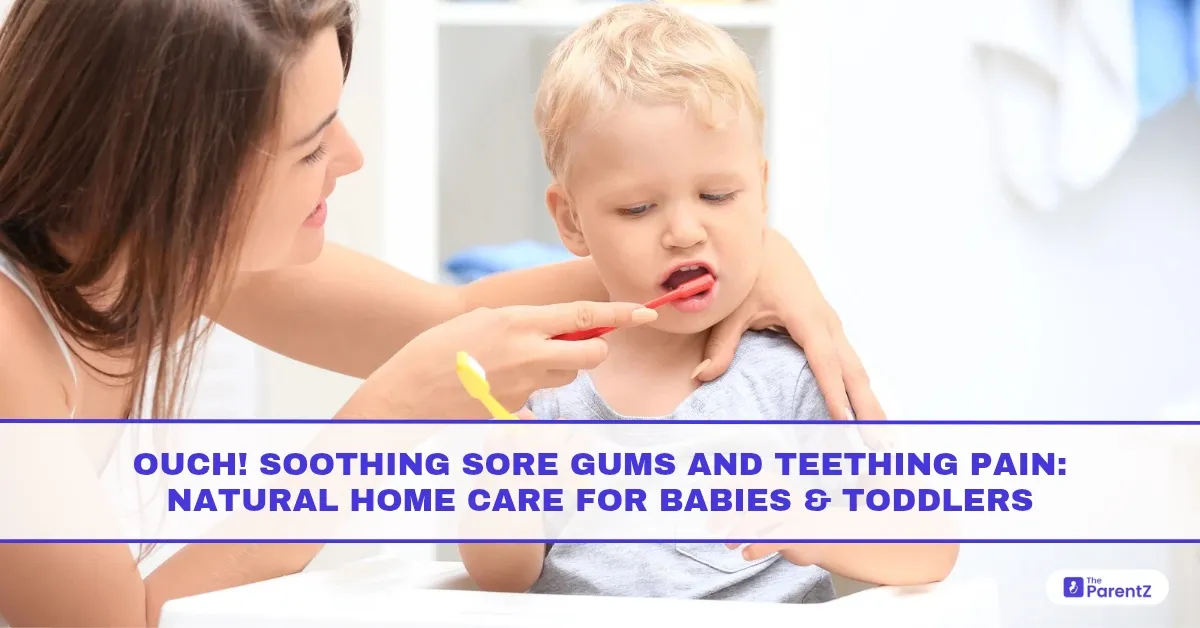Teething is one of the most common and sometimes most distressing milestones in a baby’s first year of life. As those tiny teeth begin to push through delicate gums, babies may become cranky, drooly, and eager to chew on anything in sight. As a parent or caregiver, it’s natural to want to help ease this discomfort, ideally with methods that are gentle, safe, and effective.
While teething is a normal part of growth and doesn’t usually require medical treatment, understanding what’s happening and how to respond can make a world of difference. In this article, we’ll walk you through the signs of teething, explain why it can be painful, and offer a host of natural, evidence-informed home remedies that can safely soothe your little one’s sore gums.
What Is Teething and When Does It Start?
Teething is the process by which an infant’s first set of teeth, called primary or “milk” teeth, begin to break through the gums. This usually starts between 4 to 7 months of age, though the timing can vary widely. Some babies are born with teeth, while others don’t get their first tooth until after their first birthday.
The lower front teeth (central incisors) are usually the first to appear, followed by the upper front teeth and then the others.
Common Signs and Symptoms of Teething
Not every baby experiences the same symptoms, but some of the most common signs of teething include:
- Irritability or fussiness
- Drooling (often excessive)
- Swollen or tender gums
- Gnawing or chewing on objects
- Mild rise in temperature (not exceeding 100.4°F or 38°C)
- Changes in sleep or feeding patterns
- Rubbing of the cheeks or pulling ears (due to referred pain)
Note: High fever, diarrhoea, or severe discomfort are not typical signs of teething. If these occur, consult a pediatrician.
Why Is Teething Painful?
Teething causes inflammation as the tooth pushes through the soft gum tissue, which can lead to soreness, swelling, and sensitivity. For babies, this unfamiliar discomfort can be frustrating and exhausting, especially since they can’t communicate their pain clearly.
Fortunately, there are several safe and natural ways to help ease their discomfort.
Natural Remedies for Teething: Safe and Effective Home Care
1. Cold Compresses and Teething Toys
Cold helps numb the gums and reduce inflammation.
- Chilled (not frozen) Teething Rings – Use BPA-free rubber or silicone teething rings chilled in the refrigerator.
- Cold Washcloth – Wet a clean cloth, twist it, and chill it in the fridge for your baby to gnaw on.
- Chilled Metal Spoon – Gently press a cold spoon to the gums for relief (supervised use only).
Avoid freezing teethers as they can become too hard and damage gums.
2. Gentle Gum Massage
Using clean hands, gently rub your baby’s gums in circular motions. This pressure can help alleviate discomfort.
- Use a clean finger or a silicone finger brush.
- A drop of cool, boiled water or breastmilk can make it more soothing.
3. Breastfeeding and Comfort Nursing
Many babies find breastfeeding comforting when teething. The act of sucking and the closeness to the caregiver can help them feel secure.
- If your baby bites while nursing, try removing them calmly and offer a teething toy first.
4. Natural Teething Foods (for babies over 6 months)
For babies who have started solids:
- Cold carrot sticks, apple slices, or cucumber spears (always supervised to prevent choking).
- Homemade frozen fruit pops using mashed banana or watermelon in a mesh feeder.
⚠️ Never leave a baby unattended while chewing solid items.
5. Chamomile for Calming
Chamomile has natural anti-inflammatory and calming properties.
- Chamomile Tea Compress – Dip a clean cloth in cooled chamomile tea and let baby chew on it.
- Homeopathic Chamomile – Available in some teething tablets (choose options without benzocaine or belladonna and consult a pediatrician first).
6. Distraction and Cuddles
Sometimes the best remedy is comfort:
- Hold and rock your baby.
- Offer more skin-to-skin contact.
- Try gentle music or a warm bath to relax them.
What to Avoid: Unsafe Teething Practices
It’s essential to avoid remedies that are outdated or potentially dangerous. Here’s what not to do:
Teething Gels with Benzocaine
- Benzocaine can cause methemoglobinemia, a rare but serious condition that reduces oxygen in the blood.
- The FDA advises against using benzocaine-containing products for children under 2.
Homeopathic Tablets Containing Belladonna
- Belladonna is toxic in large doses and has been linked to adverse effects in babies.
- Always check with your doctor before using any homeopathic product.
Amber Teething Necklaces
- These pose a choking and strangulation risk and have no proven benefits.
When to See a Doctor
While teething can cause minor discomfort, it’s rarely severe. See your pediatrician if:
- Your baby has a high fever, vomiting, or diarrhoea.
- Gums appear excessively swollen, bruised, or bleeding.
- Your baby is not feeding well or is unusually lethargic.
- You suspect an ear infection (which can sometimes be confused with teething).
Medical Insight: What Do Pediatricians Recommend?
Most pediatricians recommend supportive care and cold therapy over medication.
Dr. Ramesh G., Pediatrician at Apollo Hospitals, notes:
“Teething is a normal developmental milestone. Parents should focus on comfort care like cold therapy and massage, and avoid using over-the-counter medications without supervision.”
If your baby is particularly distressed, pediatricians may occasionally recommend acetaminophen (paracetamol) or ibuprofen in the correct dosage based on age and weight. Never give aspirin to children due to the risk of Reye’s syndrome.
Conclusion
Teething, though a natural part of development, can be uncomfortable for babies and stressful for parents. The good news is that most babies find relief through simple, natural methods that are safe and easy to implement at home. From cold compresses and gum massages to soothing cuddles and healthy distractions, there are plenty of ways to help your little one through this phase.
Always keep an eye out for signs that go beyond normal teething and seek medical advice when in doubt. With a bit of patience and gentle care, you can help your child move through teething with less pain and more smiles.








Be the first one to comment on this story.